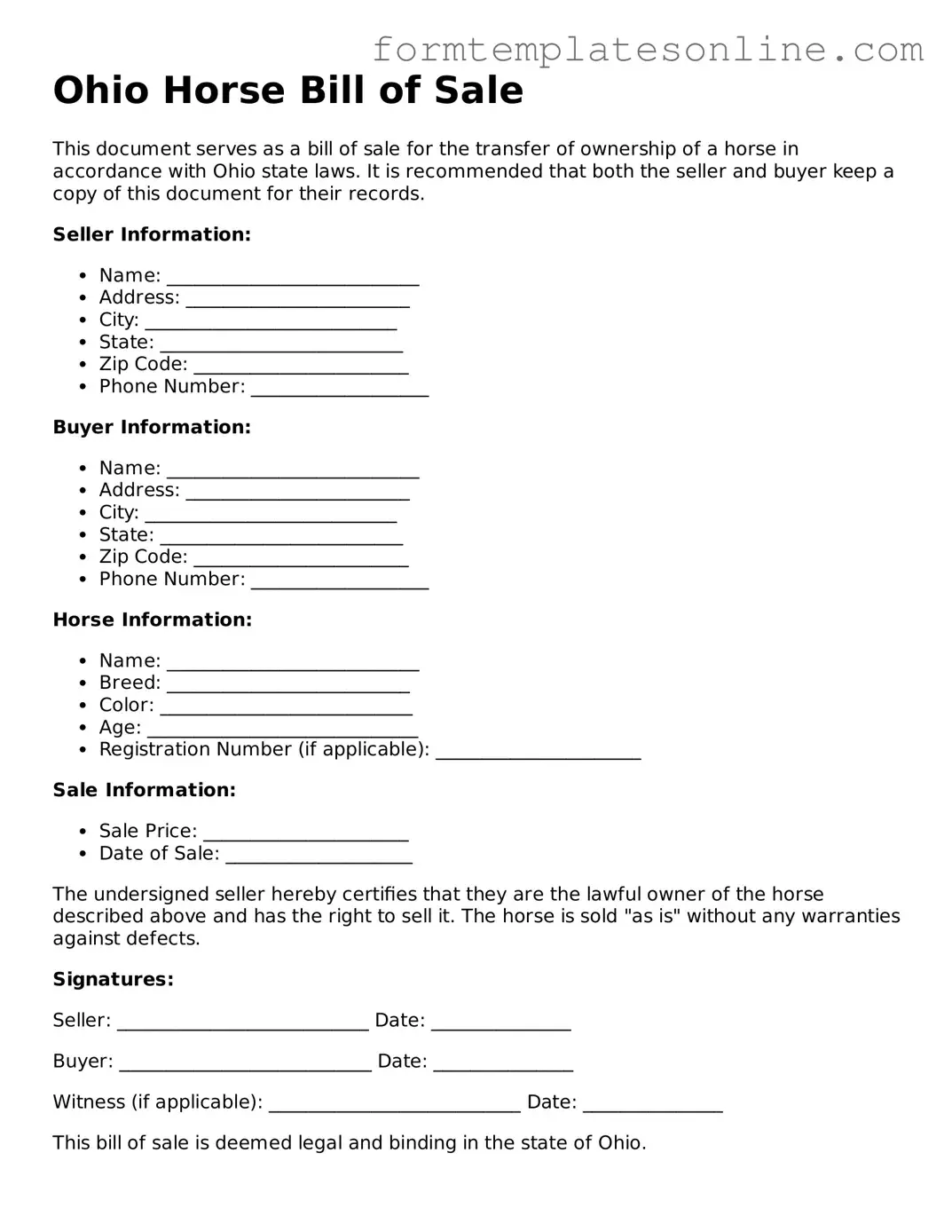What is a Horse Bill of Sale in Ohio?
A Horse Bill of Sale is a legal document that records the sale of a horse. It includes essential details such as the buyer and seller's names, the horse's description, sale price, and the date of the transaction. This document serves as proof of ownership transfer and can be important for future reference or legal purposes.
Is a Horse Bill of Sale required in Ohio?
While a Horse Bill of Sale is not legally required in Ohio, it is highly recommended. Having this document protects both the buyer and the seller by providing a clear record of the transaction. It can help resolve disputes and clarify ownership in the future.
What information should be included in the Horse Bill of Sale?
The Horse Bill of Sale should include the following information: the names and addresses of both the buyer and seller, a detailed description of the horse (including breed, age, color, and any identifying marks), the sale price, the date of the sale, and any warranties or guarantees related to the horse. Signatures from both parties are also essential.
Can I create my own Horse Bill of Sale?
Yes, you can create your own Horse Bill of Sale. It is important to ensure that all necessary information is included and that the document is clear and concise. Templates are available online, but you may want to consult with a legal professional to ensure it meets all requirements.
What if the horse has health issues or defects?
If the horse has health issues or defects, it is crucial to disclose this information in the Horse Bill of Sale. You can include a clause that states the horse is sold "as is" or specify any known issues. Transparency helps protect both parties and can prevent future disputes.
Do I need a witness or notarization for the Horse Bill of Sale?
Ohio does not require a witness or notarization for a Horse Bill of Sale to be valid. However, having a witness or notarizing the document can add an extra layer of protection and credibility, especially if any disputes arise later.
How do I transfer ownership after the sale?
To transfer ownership after the sale, the buyer should keep the Horse Bill of Sale as proof of ownership. It is also advisable to contact any relevant equine associations or registries to update ownership records if the horse is registered. This step ensures that all official records reflect the new owner.
What if I need to cancel the sale?
If you need to cancel the sale, both parties should agree to the cancellation in writing. It is best to create a cancellation document that outlines the reasons for the cancellation and includes signatures from both the buyer and seller. This helps maintain clarity and prevents misunderstandings.
